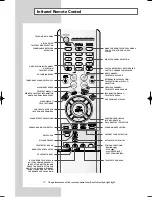
Functions
2.26 Additional Functions
SIPROTEC, 7SD5, Manual
C53000-G1176-C169-5, Release date 02.2011
478
2.26.7
Oscillographic Fault Records
2.26.7.1 Functional Description
The general line protection 7SD5 is equipped with a fault recording function. The instantaneous values of mea-
sured values
i
L1
, i
L2
, i
L3
, 3
i0
, u
L1
, u
L2
, u
L3
, 3u
0
or U
en
or U
sy2
or U
x
and
I
diffL1
,
I
diffL2
,
I
diffL3
,
I
stabL1
,
I
stabL2
,
I
stabL3
(voltages depending on the connection) are sampled at intervals of 1 ms (for 50 Hz) and stored in a circulating
buffer (20 samples per cycle). For a fault, the data are stored for an adjustable period of time, but no more than
5 seconds per fault. A total of 8 faults can be saved spanning a total time of 15 s maximum. The fault record
memory is automatically updated with every new fault, so that no acknowledgment is required. The storage of
fault values can be started by pickup of a protection function, as well as via binary input and via the serial in-
terface.
For the differential protection system of a protected object all fault records of all ends are synchronized by time
management features. This ensures that all fault records operate with exactly the same time basis. Therefore
equal measured values are coincident at all ends.
The data can be retrieved via the serial interfaces by means of a personal computer and evaluated with the
protection data processing program DIGSI and the graphic analysis software SIGRA 4. The latter graphically
represents the data recorded during the system fault and calculates additional information such as the imped-
ance and r.m.s. values from the measured values. A selection may be made as to whether the measured quan-
tities are represented as primary or secondary values. Binary signal traces (marks) of particular events, e.g.
„fault detection“, „tripping“ are also represented.
If the device has a serial system interface, the fault recording data can be passed on to a central device via this
interface. The data is evaluated by applicable programs in the central device. The measured quantities are re-
ferred to their maximum values, scaled to their rated values and prepared for graphic representation. Binary
signal traces (marks) of particular events, e.g. „fault detection“, „tripping“ are also represented.
Where transfer to a central device is possible, the request for data transfer can be executed automatically. It
can be selected to take place after each fault detection by the protection, or only after a trip.
2.26.7.2 Setting Notes
General
Other settings pertaining to fault recording (waveform capture) are found in the submenu
Oscillographic Fault
Records
submenu of the
Settings
menu. Waveform capture makes a distinction between the trigger instant
for an oscillographic record and the criterion to save the record (address
402
WAVEFORMTRIGGER
). This pa-
rameter can only be altered using DIGSI at
Additional Settings
. Normally the trigger instant is the device
pickup, i.e. the pickup of an arbitrary protection function is assigned the time. The criterion for saving may be
both the device pickup (
Save w. Pickup
) or the device trip (
Save w. TRIP
). A trip command issued by the
device can also be used as trigger instant (
Start w. TRIP
), in this case it is also the saving criterion.
An oscillographic fault record includes data recorded prior to the time of trigger, and data after the dropout of
the recording criterion. Usually this is also the extent of a fault recording (address
403
WAVEFORM DATA
=
Fault event
). If automatic reclosure is implemented, the entire system disturbance — possibly with several
reclose attempts — up to the ultimate fault clearance can be stored (address
403
WAVEFORM DATA
=
Pow.Sys.Flt.
). This facilitates the representation of the entire system fault history, but also consumes
storage capacity during the auto reclosure dead time(s). This parameter can only be altered with DIGSI at
Ad-
ditional Settings
.










































